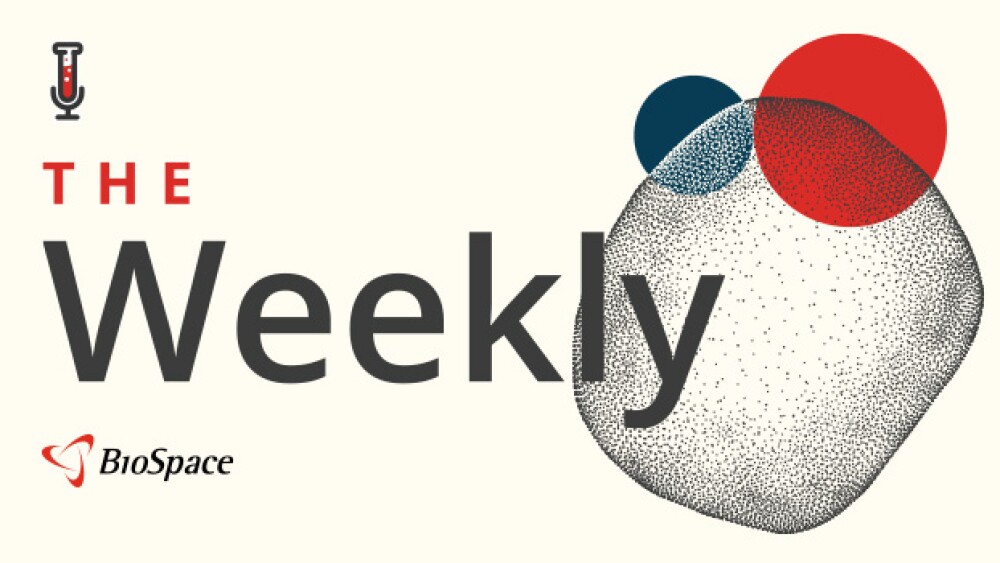SAN DIEGO, March 9 /PRNewswire-FirstCall/ -- Cardium Therapeutics and its operating unit InnerCool Therapies, Inc., today reported that positive clinical findings demonstrating faster recovery of urinary continence using localized manual cooling techniques during robotic-assisted radical prostatectomy surgery will be published in the April 2009 issue of Urology and is now available online at http://www.goldjournal.net/article/S0090-4295(08)01953-5/abstract. The Hypothermic Nerve-sparing Radical Prostatectomy: Rationale, Feasibility, and Effect on Early Continence study conducted by Thomas E. Ahlering, M.D., David S. Finley, M.D., and colleagues at the University of California, Irvine, demonstrated that cooling during robotic-assisted radical prostatectomy surgery resulted in a statistically significant improvement in early postoperative continence following surgery.
(Logo: http://www.newscom.com/cgi-bin/prnh/20051018/CARDIUMLOGO)
The results reported on 47 patients receiving hypothermia during robotic-assisted laparoscopic prostatectomy (hRLP) who were prospectively compared with a standard robotic-assisted laparoscopic prostatectomy (RLP) cohort of 666 controls. Pelvic cooling was achieved using cold irrigation and an endorectal cooling balloon cycled with 4 degrees Celsius saline. Urinary continence was defined as requiring no urinary pads. The return to continence was faster for the hRLP (hypothermia) group versus the RLP (control) group: median 39 days versus 59 days, respectively (p=0.002).
Following early positive results using manual cooling techniques during robotic-assisted radical prostatectomy surgery, InnerCool’s new UroCool(TM) Catheter System was developed and is being utilized in current studies designed to improve the ease of use and provide more cooling power, which may potentially further enhance clinical outcomes. It is believed that additional ongoing studies may offer the potential to demonstrate improved post-operative erectile function for patients as well. A study is underway by Dr. Ahlering and his colleagues at the University of California, Irvine, utilizing the UroCool(TM) system to further evaluate the potential safety and benefits of localized cooling during robotic-assisted prostatectomy, which is now the most common surgical technique for prostate cancer. A regulatory application for FDA 510(k) clearance of InnerCool’s UroCool(TM) catheter is expected to be submitted in the first quarter of 2009.
The UroCool(TM) catheter is designed to be placed within the rectal cavity adjacent to the prostate during surgery and is used in conjunction with InnerCool’s Celsius Control System(TM) which circulates cold saline in a closed loop within the catheter to allow for localized cooling. Drs. Ahlering and Finley believe that therapeutic cooling of the prostate tissue and surrounding areas during surgery (which includes both traditional open surgical approaches and the newer robotic-assisted prostatectomy) offers the potential to reduce tissue damage and inflammation and thereby provide a faster return of bladder control (continence) and possibly erectile function (potency) following surgery.
“These findings and other research conducted by Dr. Ahlering, one of the nation’s experts in the field of robotic-assisted prostate surgery, demonstrating the benefits of cooling during robotic-assisted prostatectomy underscore the potential value of InnerCool’s new investigational UroCool(TM) catheter system. We plan to submit a regulatory application for FDA 510(k) clearance for the new UroCool(TM) catheter this month,” stated Christopher J. Reinhard, Chairman and Chief Executive Officer of Cardium Therapeutics and InnerCool Therapies.
Prostate Cancer
According to the American Cancer Society, prostate cancer is the most common cancer in American men other than skin cancers. One in six men will develop prostate cancer in their lifetime, and in 2007 over 200,000 men were newly diagnosed with the disease. Fortunately, prostate cancer grows relatively slowly and 7 out of 10 men are diagnosed in the early stages of the disease before it has spread to other parts of their body, thus leading to significantly increased survival with proper treatment. While the underlying cause for the development of prostate cancer is still unknown, factors such as age, race, and lifestyle affect the probability of developing the disease. Of these, age is the strongest risk factor, and as life spans continue to increase, more men are surviving to an age at which prostate cancer is more prevalent. The chances of developing prostate cancer increases quickly after reaching age 50, and about 2 out of every 3 prostate cancers are found in men over the age of 65. The three treatment approaches to prostate cancer are ‘watchful waiting,’ radiation, or surgery, depending on patient age, and how advanced the disease is.
Radical Prostatectomy
Radical prostatectomy is an effective means of eradicating prostate cancer by surgically removing the entire prostate and surrounding tissue. It is a complex procedure because the prostate gland is located deep inside the pelvis and is intimately associated with delicate nerves that control erections and bladder control. Historically, radical prostatectomy has been performed as an open procedure requiring surgical precision to preserve these important functions. Robot-assisted laparoscopic radical prostatectomy emerged with the introduction of systems such as the da Vinci Surgical System (a product of Intuitive Surgical, Inc.), which is minimally invasive and enables a high degree of precision. Since 2000, over 900 of such systems have been installed in hospitals worldwide, of which more than 700 are located in North America. Estimates show that more than 90,000 radical prostatectomies were performed in 2007 in the United States. Currently it is estimated that more than 70% of radical prostatectomies are performed robotically.
Post-Operative Incontinence and Erectile Dysfunction
Urinary incontinence and erectile dysfunction are very common side effects following open or robotic radical prostatectomy. Temporary loss of bladder control occurs in most men. While most eventually regain full control, this can take up to a year. This extended lack of urinary control is the most bothersome patient-reported side effect of prostate surgery. In addition to incontinence, many men experience some degree of erectile dysfunction following radical prostatectomy, depending on a number of factors including how potent the patient was prior to surgery, patient age, tumor stage, and how the neurovascular bundles were preserved during surgery. This side-effect is a frustrating and inconvenient experience. In many cases, the recovery of sexual function can take up to 24 months.
Additional Targeted Tissue Cooling
In addition to use in radical prostatectomies, targeted tissue cooling as developed for the UroCool(TM) catheter has a number of potential future clinical applications for tissue cooling in the pelvic region. These include other urological procedures such as radical cystectomy, a common procedure used to treat bladder cancer that has spread into the bladder wall. There are also a number of gynecological and colorectal cooling opportunities, including radical hysterectomy, myomectomy for removing fibroids from the uterus, and various types of transvaginal surgery.
About Cardium
Cardium Therapeutics, Inc. and its subsidiaries, InnerCool Therapies, Inc. and the Tissue Repair Company, are medical technology companies primarily focused on the development, manufacture and sale of innovative therapeutic products and devices for cardiovascular, ischemic and related indications.
Cardium’s InnerCool Therapies subsidiary is a San Diego-based medical technology company in the emerging field of temperature modulation therapy to rapidly and controllably cool the body in order to reduce cell death and damage following acute ischemic events such as cardiac arrest or stroke, and to potentially lessen or prevent associated injuries such as adverse neurological outcomes. For more information about Cardium’s InnerCool subsidiary and patient temperature modulation, including InnerCool’s new RapidBlue(TM) System, which just received FDA clearance, and its CoolBlue(TM) System, please visit www.innercool.com.
Cardium also has two biologic candidates in clinical development. Cardium’s Tissue Repair Company subsidiary (TRC) is focused on the development of growth factor therapeutics for the treatment of severe chronic diabetic wounds. TRC’s lead product candidate, Excellarate(TM), is a DNA-activated collagen gel for topical treatment formulated with an adenovector delivery carrier encoding human platelet-derived growth factor-BB (PDGF-BB). Excellarate(TM) is initially being developed to be administered once or twice for the potential treatment of non-healing diabetic foot ulcers. Other potential applications for TRC’s Gene Activated Matrix(TM) (GAM) technology include therapeutic angiogenesis (cardiovascular ischemia, peripheral arterial disease) and orthopedic products, including hard tissue (bone) and soft tissue (ligament, tendon, cartilage) repair. For more information about Cardium’s Tissue Repair Company subsidiary, please visit www.t-r-co.com.
Cardium’s Generx product candidate (alferminogene tadenovec, Ad5FGF-4) is a DNA-based growth factor therapeutic developed for potential use by interventional cardiologists as a one-time treatment to promote and stimulate the growth of collateral circulation in the hearts of patients with ischemic conditions such as recurrent angina. For more information about Cardium Therapeutics and its businesses, products and therapeutic candidates, please visit www.cardiumthx.com or view its 2007 Annual Report at http://www.cardiumthx.com/flash/pdf/CardiumAR07_Book_FINAL.pdf.
Forward-Looking Statements
Except for statements of historical fact, the matters discussed in this press release are forward looking and reflect numerous assumptions and involve a variety of risks and uncertainties, many of which are beyond our control and may cause actual results to differ materially from stated expectations. For example, there can be no assurance that results observed in one study or using one type of product or procedure will be replicated in subsequent studies or in studies using newly-developed products or procedures, that planned product development efforts and clinical studies can be performed in an efficient and effective manner, that regulatory approvals can be obtained in a timely manner or at all, that partnering, distribution or other commercialization efforts can be achieved and if so that they will effectively accelerate InnerCool’s patient temperature modulation business or market, that product modifications or launches will be successful or that the resulting products will be favorably received in the marketplace, that our products or proposed products will prove to be sufficiently safe and effective, that our products or product candidates will not be unfavorably compared to competitive products that may be regarded as safer, more effective, easier to use or less expensive, that results or trends observed in one clinical study will be reproduced in subsequent studies, that third parties on whom we depend will behave as anticipated, or that necessary regulatory approvals will be obtained. Actual results may also differ substantially from those described in or contemplated by this press release due to risks and uncertainties that exist in our operations and business environment, including, without limitation, risks and uncertainties that are inherent in the development, testing and marketing of therapeutic hypothermia devices and the conduct of human clinical trials, including the timing, costs and outcomes of such trials, whether our efforts to launch new devices and systems and expand our markets will be successful or completed within the time frames contemplated, our dependence upon proprietary technology, our ability to obtain necessary funding, regulatory approvals and qualifications, our history of operating losses and accumulated deficits, our reliance on collaborative relationships and critical personnel, and current and future competition, as well as other risks described from time to time in filings we make with the Securities and Exchange Commission. We undertake no obligation to release publicly the results of any revisions to these forward-looking statements to reflect events or circumstances arising after the date hereof.
Copyright 2009 Cardium Therapeutics, Inc. All rights reserved.
For Terms of Use Privacy Policy, please visit www.cardiumthx.com.
Cardium Therapeutics(TM) and Generx(TM) are trademarks of Cardium Therapeutics, Inc.
Tissue Repair(TM), Gene Activated Matrix(TM), GAM(TM) and Excellarate(TM) are trademarks of Tissue Repair Company.
InnerCool Therapies(R), InnerCool(R), Celsius Control System(R), RapidBlue(TM), CoolBlue(TM), Accutrol(R), Temperature Control Element(R) and TCE(R) and UroCool(TM) are trademarks of InnerCool Therapies, Inc. (other trademarks belong to their respective owners)
CONTACT: Bonnie Ortega, Director, Investor/Public Relations of Cardium
Therapeutics, Inc., +1-858-436-1018, InvestorRelations@cardiumthx.com
Web site: http://www.cardiumthx.com/




